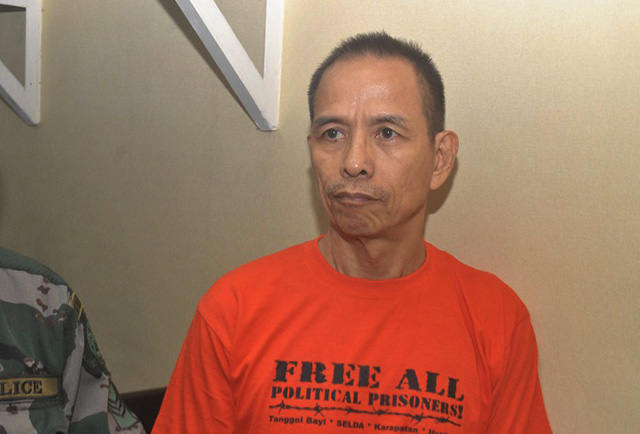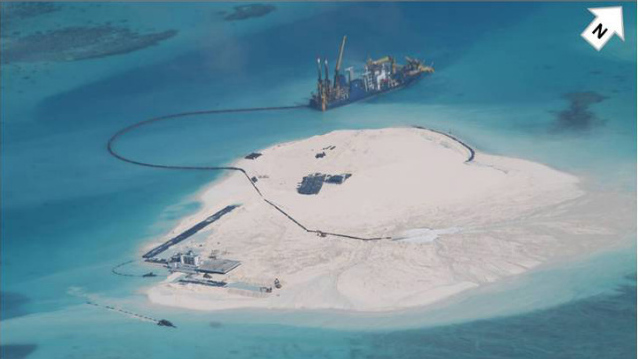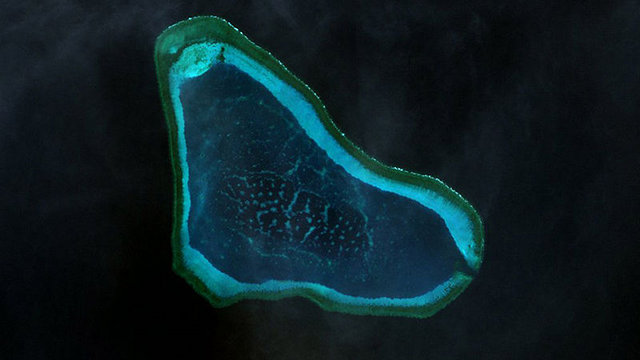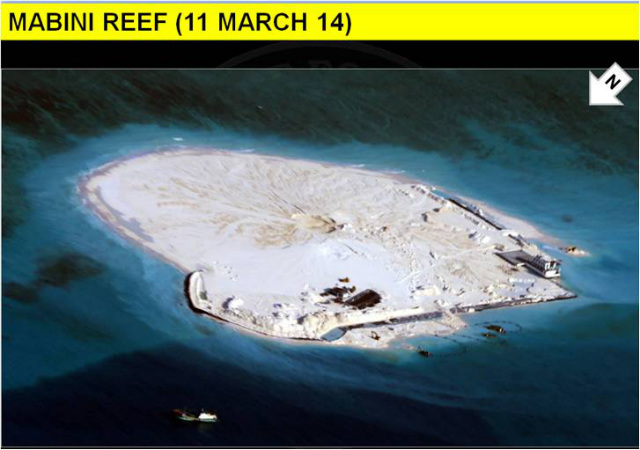Communist propaganda from the pro-CPP online publication Bulatlat (May 15):
‘Ceasefire should not be a precondition to peace talks’ – Benito Tiamzon
“The reactionary government is only after a ceasefire while the revolutionary movement treats ceasefire as a result of substantive agreements. The reactionary government only wants a ceasefire because it does not want to address the fundamental roots of the armed conflict.” – Benito Tiamzon
“Waging the revolution while talking about peace is not contradictory,” Benito Tiamzon said in an interview with Bulatlat.com.
“If the talks would progress, we can talk about adjusting the level and intensity of fighting; but if the talks are going nowhere, the fighting should continue.”
Benito Tiamzon and Wilma Austria, alleged top leaders of the Communist Party of the Philippines (CPP) were arrested March 22 together with five others in Zaragosa village, Aluginsan, Cebu.
The Armed Forces of the Philippines has been claiming that Tiamzon is the chairman while Wilma Austria is the secretary general of the CPP.
Tiamzon said the NDFP could not afford to repeat its mistake in 1986 when it agreed to a ceasefire before talking about the substantive agenda in the peace negotiations.
“Even if the agenda had not yet been laid down then, the NDFP already agreed to a ceasefire. When the reactionary government got what it wanted, it was no longer interested in talking about the substantive agenda,” Tiamzon recalled.
The GRP-NDFP peace talks collapsed after the Mendiola massacre on January 22, 1987.
 Alleged top communist leader Benito Tiamzon refuses to enter any plea during the arraignment for kidnapping and serious illegal detention charges at the Quezon City Trial Court April 8. (Photo by Macky Macaspac)
Alleged top communist leader Benito Tiamzon refuses to enter any plea during the arraignment for kidnapping and serious illegal detention charges at the Quezon City Trial Court April 8. (Photo by Macky Macaspac)
“It is a concrete experience on how a ceasefire could hinder the progress of the peace talks,” Tiamzon said.
“The reactionary government is only after a ceasefire while the revolutionary movement treats ceasefire as a result of substantive agreements. The reactionary government only wants a ceasefire because it does not want to address the fundamental roots of the armed conflict.”
The Aquino administration has been adamant in demanding for an immediate ceasefire. In his first State of the Nation Address (SONA), President Beningo Aquino III said, addressing the CPP-NPA-NDF [Communist Party of the Philippines-New People’s Army], “If it is peace you truly desire, then we are ready for an immediate cease-fire. Let us go back to the table and begin talking again.” “It is difficult to begin discussions in earnest if the smell of gun powder still hangs in the air.”
In a forum early this month, GPH panel chairman Alexander Padilla said, “Let’s talk about lessening the level of violence… Or any other thing that the NDF wanted to talk about but certainly, we don’t want to talk about what are the roots of social conflict, the basic ills of society and we can discuss it for the next 50 years and we will not arrive at the same conclusion.
In the same forum, Padilla said there is a precedent to declaring a ceasefire while talking, citing the peace negotiations with the Moro Islamic Liberation Front (MILF).
To this, Tiamzon said, “We cannot accept that we should make the MILF a model for armed struggle and for peace talks. The MILF has different strategies and tactics.”
Tiamzon said the MILF had difficulties recovering from the all-out war of the Estrada administration. “When they attempted to resort to guerilla warfare, they were not that successful. That is not a problem for the NPA,” he said.
The NPA, the armed wing of the CPP, has been waging war against the government for 45 years now.
Asked about the military’s claims that the NPA is already a spent force, Tiamzon said, “Their lies are the very proof that the NPA remains their biggest headache.”
Wilma Austria said the military is merely “fabricating lies in their public pronouncements about their assessment of the NPA.”
In its statement on the eve of the 45th anniversary of the NPA, AFP Chief of Staff Gen. Emmanuel Bautista said that the NPA would become irrelevant in five years. The military said the NPA has been reduced to less than 4,000 fighters.
“While in their own assessment, after the first phase of Oplan Bayanihan, the AFP [Armed Forces of the Philippines] stated that the NPA even grew in areas where they had massive operations,” Austria added.
Austria said they were able to get a copy of the AFP’s initial assessment of Oplan Bayanihan, which was never made public. Oplan Bayanihan is the counterinsurgency program of the Aquino administration. “The military is fond of presenting fake rebel returnees. Even if they mouth lies, the people know it is not the truth,” Austria said.
Jasig
Asked about the Aquino government’s claim that they are not covered by the Joint Agreement on Safety and Immunity Guarantees (Jasig), Tiamzon said that he and Austria are holders of documents of identification (DI), proof that they are covered by immunity and safety guarantees. In fact, Tiamzon said they belong to the first batch of DI holders.
Signed in 1995 by then the Government of the Republic of the Philippines (GRP) and the NDFP, Jasig provides all duly accredited persons guaranteed free and unhindered passage in all areas in the Philippines, and in travelling to and from the Philippines in connection with the performance of their duties in the negotiations.
Immunity guarantees for all accredited persons include immunity from surveillance, harassment, search, arrest, detention, prosecution and interrogation or any other similar punitive actions due to any involvement or participation in the peace negotiations.
The Government of the Philippines (GPH) panel maintained that the Jasig “is inoperative for those using aliases and those who are not directly involved in the peace process.”
Justice Secretary Leila de Lima said in a report that the couple could not invoke Jasig because Jasig “has no effect on their standing warrants of arrest.” De Lima further claimed that Jasig is “only operative if there are ongoing peace talks, which is not the case.”
The GPH panel added, “To sustain their [Tiamzon couple’s] claim to JASIG protection is ridiculous because that would mean they can wage war and violence against government and when caught, claim JASIG protection and expect to be released.”
“In the first place, it is an agreement, and the Jasig is essential to the conduct of peace talks,” Tiamzon said. “Back then, the reactionary government wanted to ensure that they would be talking to persons who are in the position to make decisions,” Tiamzon said, referring to the resumption of peace talks during the Ramos administration.
“Now, the reactionary government is questioning our role in the peace talks, saying that we were busy directing the revolution.” “Who do they want to talk with?” Tiamzon asked. “If they are claiming that we play a significant role in the revolutionary movement, then our inclusion in the list of accredited persons of the NDFP should have been the least controversial.”
Biggest obstacle
Asked how the peace talks could proceed, Tiamzon said the tactical obstacle to the peace talks is the “overweening arrogance of Aquino.”
“He thinks he is popular, that he has the support of the U.S. government and that he has an overwhelming military advantage so he does not need to talk with the NDFP,” Tiamzon said.
“Such arrogance must be shattered by the intensifying struggles of the Filipino people in all forms,” Tiamzon said.
“He must be jolted so he would be compelled to talk with the NDFP sincerely.” As it is, Tiamzon said the Aquino administration is sabotaging the peace talks without openly declaring it is no longer interested in peace talks with the NDFP.
http://bulatlat.com/main/2014/05/15/ceasefire-should-not-be-a-precondition-to-the-peace-talks-benito-tiamzon/












